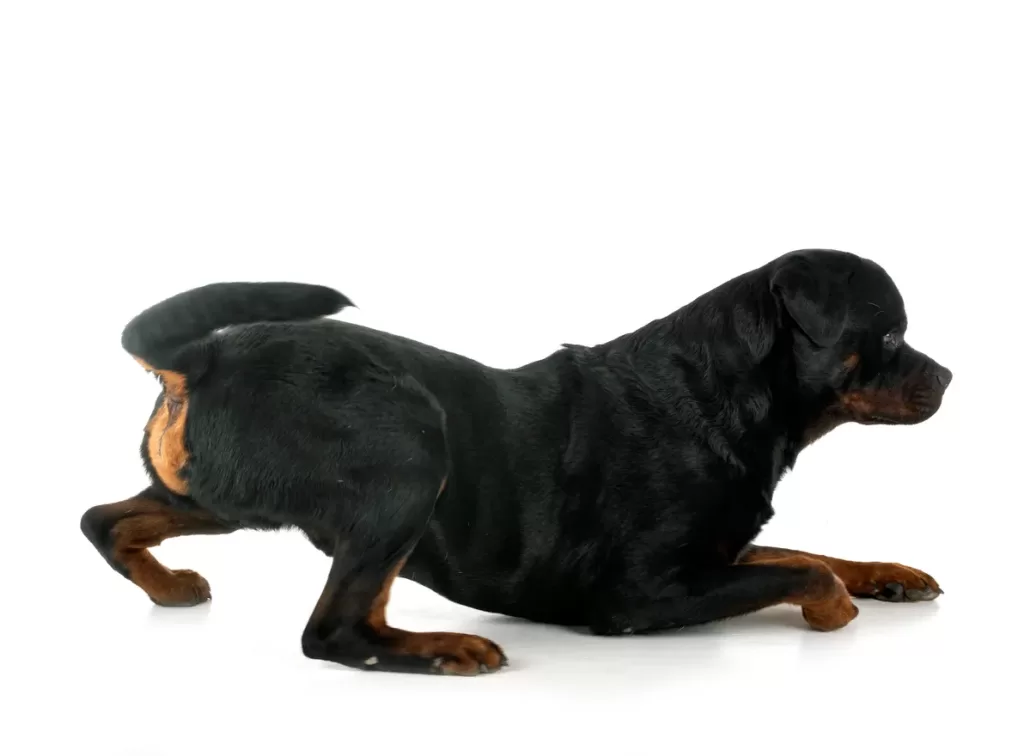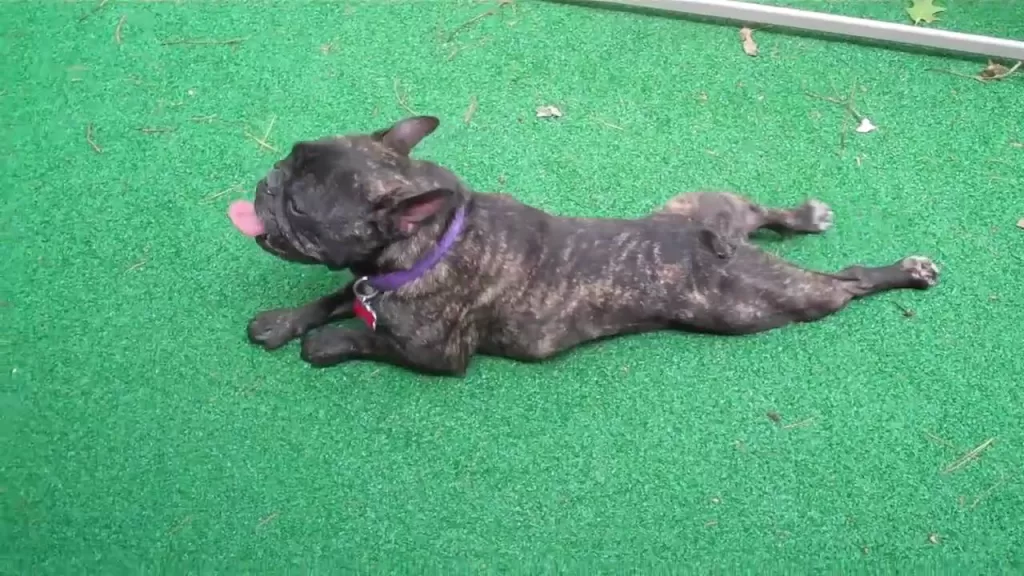Sometimes our dogs can do weird things. If you have ever seen your dog army crawl on your stomach like an Army soldier, you may ask yourself if this is cause for concern.
Table of Contents
Understanding the origins of this type of behavior requires understanding whether it is time for a vet visit.
Of course, there are a few different reasons why dogs pull on their belly on the floor. It can be a form of submissive behavior that is designed to look beautiful and get brownie points.
Another less hopeful possibility is that they may scratch themselves. If your dog is army crawling to get relief from itching, you need to make sure any serious medical condition can cause itching and use proper supplements to avoid risks.
Fortunately, it is very simple. In general, army crawl behavior does not indicate a serious medical problem.
On the other hand, army crawling is actually a good exercise for most dogs. If your dog is large, learning to repeat this trick will do them some good.
This will help them get into tight spaces if needed. And also helps them to build strength.
The reason behind the army crawl

Here’s a chart highlighting the top reasons for dogs’ army crawling on their belly:
| Reason | Explanation |
|---|---|
| Playful behavior | Some dogs may engage in army crawling as part of their play behavior. It can be a way for them to initiate or invite play with other dogs or humans. |
| Submissive behavior | Dogs may adopt the army crawl posture as a display of submission. It is a submissive behavior that signals deference and non-threatening intentions towards other dogs or individuals. |
| Scent exploration | Dogs have a keen sense of smell, and army crawling can allow them to get closer to the ground to investigate and explore scents more effectively. They may use this behavior to track or identify interesting smells. |
| Tactical movement | In certain situations, such as during hunting or when stalking prey, dogs may use the army crawl to move stealthily and silently. It enables them to stay low to the ground and approach their target unnoticed. |
| Cooling off | Dogs may choose to army crawl on cooler surfaces, like tile or grass, as a way to regulate their body temperature. By spreading their belly on the cool surface, they can dissipate heat and seek relief from hot weather or after physical exertion. |
| Comfort or relaxation | Some dogs simply find the army crawl position comfortable and relaxing. It may be a cozy way for them to rest or take a break while still being alert to their surroundings. |
| Medical or physical discomfort | In some cases, dogs may exhibit an army crawl if they are experiencing pain, discomfort, or physical issues, such as arthritis or injury. It is important to monitor their behavior and consult a veterinarian if there are any concerns. |
Dogs can be very vulnerable when they start as puppies. Their first moves in life revolve around crawling. They need to crawl up to their mothers to stay warm and feed them with nutritious milk.
Because of this harmful early condition, most dogs retain crawling behavior as a kind of cute trick.
If your dog is a regular crawler, you may have noticed that they crawl on the ground with puppy-dog eyes to get anything from you.
This behavior is reinforced when you make a big fuss and reward them for being so beautiful. This turns out to be a good exercise trick to demonstrate to your dog.
Training your dog to army crawl is a trick
If you want to train your dog to crawl on command, it’s very easy, especially if they already exhibit this behavior. It is very easy to treat them when they do this.
Follow these simple steps if you want to teach your dog if this is a new behavior.
Keep your dog in the following position. This is very easy if the down command is already known to them.
Kneel down next to your dog in the lower position, holding a treat in front of them.
Give a cue that sounds like “crawl” as they crawl forward to reach the treat. You can gently place your hand on the back of your dog while moving forward.
Continue to practice with the treat in your hand until they crawl a few feet forward at once.
Once they understand what is needed you can put the treats on the table or in your pocket.
Give a verbal clue or hand signal and give a treat after they do the trick. Thus they learn to act on command rather than need a treat like bait.
The number of repetitions your dog needs to learn this trick varies from dog to dog. Practice daily and keep sessions short. At no time does your dog crawl like a commando.
The benefits of army crawling for dogs
Here’s a chart outlining the benefits of army crawling for dogs:
| Benefits | Explanation |
|---|---|
| Muscle strengthening | Army crawling requires dogs to engage their core muscles, forelimbs, and hindlimbs. Regularly practicing this movement can help strengthen these muscle groups, leading to improved overall muscle tone and stability. |
| Body awareness and coordination | Army crawling encourages dogs to be aware of their body position and movement. It helps them develop better coordination, balance, and proprioception (awareness of their body in space). This can be beneficial for their overall mobility and physical abilities. |
| Mental stimulation | Performing army crawl exercises can provide mental stimulation for dogs. It requires focus, concentration, and problem-solving skills as they navigate obstacles or follow commands. This mental engagement can help prevent boredom and promote mental well-being. |
| Bonding and training opportunities | Army crawling can be incorporated into training exercises and interactive play sessions. It allows dogs to develop a stronger bond with their owners or handlers while reinforcing obedience commands and encouraging positive interactions. |
| Confidence building | Successfully performing army crawl exercises can boost a dog’s confidence and self-esteem. It provides them with a sense of accomplishment and can help build trust in their own abilities. This can be especially beneficial for shy or fearful dogs, aiding in their overall socialization and confidence development. |
| Agility and flexibility | Army crawling requires dogs to move in a low and controlled manner, promoting agility and flexibility. Regular practice can enhance their ability to maneuver through tight spaces and navigate obstacles with ease. |
| Fun and interactive play | Dogs often enjoy the physical and mental challenge of army crawling, especially when incorporated into games or training sessions. It can add variety and excitement to their daily routines, promoting an active and happy lifestyle. |
Crawling action uses a lot of muscle in a dog’s legs, which usually do not get much exercise.
Army crawl is great for developing core strength and support in joint flexibility. It also helps large dogs with agility training.
This is also useful if the dog ever needs to crawl into an enclosed space. This can help with the competition or if your dog ever has to pull you out of a fire to save your life.
The causes of the army are crawling behavior in dogs
If your dog suddenly starts exhibiting this behavior which was not the previous behavior, it indicates a deeper problem.
Try to find out if there is an underlying medical reason for your dog army crawl behavior.
Fortunately, it is very simple and straightforward. Army crawling is rarely a concern. It is usually associated with some form of irritation. Accordingly, the first step in deciding what is going on is looking at your dog’s belly.
Rash or skin Irritation
If your dog has some kind of rash, then he is definitely crawling army to reduce his itching. If you see red, irritated-looking patches, this may be the problem. Usually, if you ask your vet, they can give you anything to treat the rash.
Ticks and Fleas
Another possibility is bites or scratches. If your dog is a little explorer, he is more likely to be charged by some kind of caterpillar or another bug.
These bites should go away after a while, but you may want to use some kind of relief cream so that they do not become more irritating.
Also Read: Corona Vaccine for Dogs – Is my German Shepherd at Risk?
If it is a kind of bite, you should not worry too much except in the area where you live with the poisonous insects you know.
In general, this is not a problem. If you live with poisonous insects, you should check the bite immediately.
Generally, a very itchy bite indicates an infestation of flies or other annoying insects. If you have a dog, it is a good idea to familiarize yourself with how fleas bite.
You should also be prepared to take the necessary precautions against flies.
If your dog has fleas, then you can get out with a counter flea solution. If your problem persists, you may need to go to the vet for more serious ones.
In severe cases, pest control may be required for your home or residence.
Allergies
Another possibility is allergies. While it is rare for dogs to be allergic to animal dandruff or pollen, their skin may be irritated by accidentally rubbing certain substances or chemicals.
If the same happens, the treatment is very similar to a rash. The irritated area should be easily identified and you can treat it with over-the-counter creams.
More serious irritations can be resolved with vet-recommended products.
If irritation returns after treatment, consider removing certain substances or chemicals from your daily routine around the house.
Climate and Hot Weather
Another reason is to cool themselves in hot weather. Some dogs stretch themselves and lay their belly on a cold surface like floor tiles.
The last possibility of being psychologically more than a medical problem is separation anxiety or fear-based behavior.
We have said before that crawling is infantile behavior in dogs. When dogs are anxious, they may engage in army crawling behavior as a sort of coping mechanism against their anxiety.
If they get mixed up while crawling it is fear-based behavior.
In such cases, all you can do is identify the source of their concern and correct it. For things like noise anxiety, it’s easy to deal with.
The actual segmentation concern is, unfortunately, a bit complicated.
Conclusion
Army crawling for dogs has its merits. Do you like boot camp experiences? Join your dog on an agility course and see how much you enjoyed being together.
Outdoor activities with the proper breed of dog and owner are very enjoyable. Some will say you are “barking madness” but your dog will greet you and say “Yes sir!”

